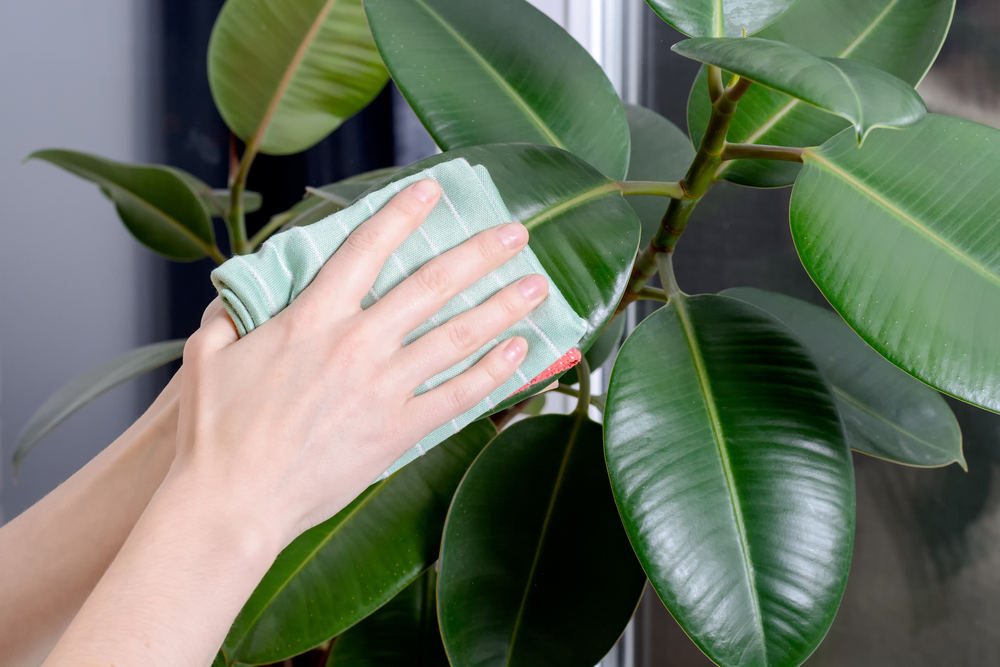You’ve done everything right–you bought a plant. You watered it. You fertilized it. You admired its beauty. What’s left? Grooming. Yes, grooming! Making sure your indoor plants are clean, trimmed, and healthy is a big part of regular maintenance, and can alert you to issues developing before it’s too late.
Plants need to be cleaned often, not just to maintain a clean look but to allow transpiration and photosynthesis to take place without roadblocks like dust and pests. Healthy plants are less likely to fall prey to pests such as aphids or spider mites and can fight off disease more easily.
How to clean
Cleaning your plants is a simple task that is possible using household items. For plants with smooth leaves, wiping with a damp cloth may suffice. To eliminate more buildup, dilute regular dish soap with water, and either spray or wipe the leaves clean. A good ratio is one quarter dish soap to one quart of water.
One important tip is to avoid scrubbing. Gently wiping from the base of the leaves to the tips should be plenty of effort. Scrubbing can actually damage the surface of the leaves. For bigger plants, many professionals use a leaf blower to remove dust and then wipe down the leaves with insecticidal soap and water. Instead of using a commercial leaf shine product, mix a few drops of neem oil with water to give leaves a shine as well as repelling pests.
Of course for plants with soft or fuzzy leaves, such as African violets, you must use a different method. Grab a soft dry terry washcloth or a soft paintbrush and gently loosen any dust and blow it away.
Trimming is your friend
While you’re cleaning your plant, you’re in a prime position to notice and remove any dead leaves or branches. Don’t be afraid to prune your plants. Dead or diseased leaves can attract pests, so best to remove them frequently. If you need to cut away leaves or branches, use clean, sharp scissors or pruning shears so that there are no ragged edges.
For flowering plants, deadheading is important. Cutting off spent blooms will encourage the plant to focus its energy where it is needed, whether that’s in new blooms or putting out new shoots and branches. Plus, it creates a clean, tidy appearance for the plant overall. If your plants produce fruit after flowering, remove them before they begin to decay, which can also attract pests.
Checking in
Cleaning and trimming your plants will keep them healthy and make you aware of any infestations or diseases that may be brewing. By getting up close and personal with your plants, you can nip pest or disease issues in the bud.
These grooming check-ins should take place on a monthly basis, or more frequently if you live in a particularly dusty environment (near construction, in the desert, etc.). Of course, if you’d rather, the professionals at Plantscapers can help to maintain your plants. We are only a phone call or email away. Need help? Drop us a line!







